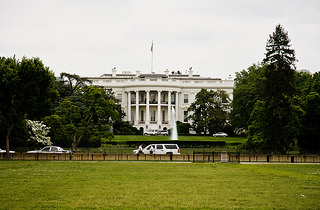Argo Rewrites History and Leaves Canada Slighted
How accurate was the ‘best picture?’
By Rebecca Ferguson, staff writer
As midnight neared on the night of the 85th Academy Awards, Hollywood’s elite sauntered up onto stage and accepted a golden Oscar for the thriller film, Argo. The teary-eyed director, producer and lead actor Ben Affleck, gave a heartfelt acceptance speech in which he thanked many people. It was in a rush and near the end that he casually threw in a thank you to Canada.
The offhand manner in which he referenced Canada was quite symbolic. Like his thank you, Affleck’s inclusion of Canada in his film was rushed and lacking. Affleck rewrote history by placing the CIA, Hollywood and Washington at center stage and by refusing to acknowledge Canada’s crucial and central role in rescuing six Americans during the Iranian hostage crisis.
Argo is loosely based on the events of the 1979 Iranian hostage crisis. The film opens with a grainy montage depicting Iran’s grim history. It shows their oppressive Shah, who was granted asylum by America once he began dying of cancer. The documentary style opening gives the film an authentic feel and lures viewers into a false sense of realty.
The movie shows the Iranian mob storming the American embassy in Tehran and taking hostage all of the people inside. However, six Americans manage to escape and they eventually take shelter in the residence of the Canadian ambassador, Ken Taylor. The film then focuses on CIA agent, Tony Mendez (played by Affleck) as he devises a plan to secretly get the six Americans out of Iran.
Working closely with influential members of Hollywood, Mendez devises a plan to disguise the Americans as a Canadian film crew for the space movie ‘Argo,’ who are in Iran to scout locations. The American government orchestrates everything and after a few close calls, the six hostages manage to soar out of Iranian territory on a Swissair flight. Affleck took many creative liberties while making this film. He minimized Canada’s role and handed America the glory.
Jimmy Carter was the American President at the time of the Iranian hostage crisis. [pullquote]“I was taken aback by its distortion of what happened because almost everything that was heroic, or courageous or innovative was done by Canada and not the United States,”[/pullquote] he stated upon seeing the film.
Like Carter, Ken Taylor was disappointed by the inaccuracy of the film. However, he knew that the story would be inaccurate when he heard Affleck was basing his movie on the book written by Tony Mendez. Mendez was only present in Iran for a day and a half and therefore had no idea what was going on in the country for the months leading up to the rescue. Due to this lack of inside information, Taylor stated that it is not surprising that the film centered on Washington and Hollywood instead of primarily focusing on Iran.
Separating the Truth from the Lies
The factual errors begin early in film. In the movie there were only six Americans who escaped from the embassy. In reality, more managed to make it out however they were quickly picked up by the Revolutionary Guard. After being rejected by the British and New Zealanders, the film then shows the six seeking refuge with the Canadians. Affleck slighted both these countries as well, as these events never took place.
After a few days on the run, five of the escaped Americans called John Sheardown, a Canadian diplomat. A Swedish diplomat took in the sixth American briefly before he joined the other Americans.































Share the post "Argo Rewrites History and Leaves Canada Slighted"